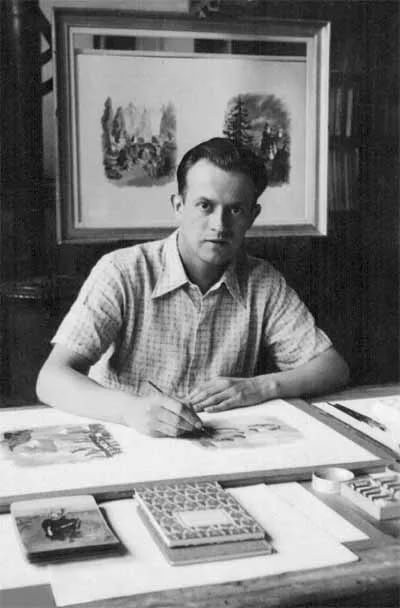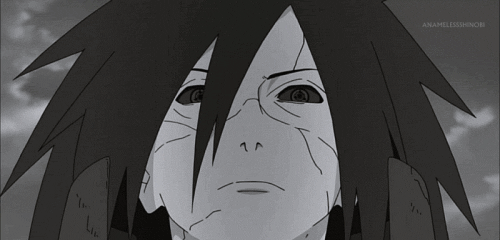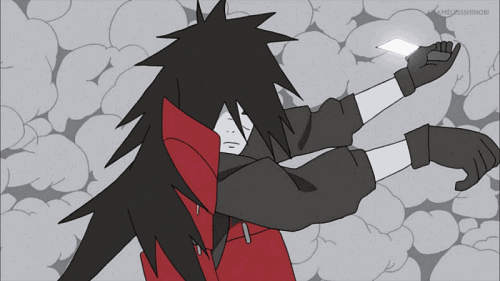So, I Was Reading Six Novel And This Part Made Me Laugh:
So, I was reading six novel and this part made me laugh:
“Looks like the other side’s no slouch, either,” the voice said, its tone tense. “If your mental powers beat it, we should’ve gone back where we were the second you sliced into that thing. But since it didn’t play out that way, this could be trouble. You can kill this thing over and over, and it’ll just keep coming.” D’s reply was placid. “Still, it has to die eventually. Even if it’s just an illusion.”
So... This is how I see this scene:

More Posts from Foolish-neko and Others
fun facts about ukrainian vampires (opyr)
• opyri can be of two origins: born and made. made opyri are made by witches, who can smear a baby with blood of a man who went to sleep without praying, thus making the child an opyr.
• opyri have two souls. when opyr dies, only one soul goes to the otherworld. this is why they continue living after death. they aren't immortal though, and only live post-death for seven years. you can presume the person who died was an opyr and will return later if right after their death was a great storm.
• they are very merry fellas and are known to sing, dance and play musical instruments. you can see them partying if you go to the village border at midnight. they also can be spotted smoking a pipe while laying in their coffin.
• opyr can turn into variety of different things: a child, a white or a black dog, a cat, a wolf, a horseman.
• if someone sneezes and you don't respond with "bless you" such person can become an easy target for opyr.
• to get rid of the opyr, you must take them into your arms and carry them across the town or village three times. classical stake to the heart works too.
How to Get a Chronological Dash as a New Blog
I've been working on a Tumblr Roleplaying 101 guide, and in doing so wound up making a brand new Tumblr account for some screenshots. And this process made me realize how weirdly complicated Tumblr has made it for new accounts to get a chronological dash. So if you just want to see posts from people you follow, in the order that they made them, this what you have to do.
First, go to your settings, go under Dashboard, and scroll down to Preferences. Toggle off Best Stuff First. This switches your dash from an algorithm feed to a chronological one.

If you have an older blog, that's all you have to do. But if your blog was created more recently, you have an extra step.
The Tumblr dashboard has different tabs, which you can see across the top of your feed. Most older users have completed tuned these out, because we don't care about anything other than the basic feed. There is a Following tab, which shows posts from users you follow, and a For you tab, which shows recommend posts Tumblr thinks you'll like.

On blogs created before May 8, 2023, the Following tab is the default view. However, blogs created after this date have the For you tab as the default view. (This is an intentional change by Tumblr.)

This means if you are a newer blog and want to see posts from people you follow, you'll need to manually switch to the Following tab every time you open the dashboard.
If you do not like this change, consider contacting Tumblr staff. Submit a form under the Feedback category and explain that you'd like the option to make the Following tab the default for new blogs. And please, be polite! There is a person on the other side of the screen who likely had no say in this change, and even if they did, they don't deserve to be yelled at.
Please enjoy these very scientific reconstructions of how Sherlock Holmes may have stuck his feet up on the mantlepiece in 'A Case of Identity'








Crying over this tiny Ukrainian flag amidst ruins after russian strike.

I lied Here’s new post Too long to explain
Yeah woke up in a cold sweat this morning because of that air attack. And it was like that the WHOLE NIGHT.
So uh, it’s 6am I Kyiv, and there’s another ballistic missile attack. It’s the kind when you hear (or feel) the hit/explosion even before the air raid alarm goes. That’s how fast that shit is.
Waking up in terror of noise, grabbing cat & dog and running.
Today explosion wave fucked up my window and my plants.

Oh well.
Staying up for the news updates and more possible attacks.
When the moment comes and there is no turning back and Anor Londo is ahead: - So... Mb we will return home, I will give you those 6 bottles of brandy and you will drink it, and I will sit next to you and watch memes with cats? - No! We have WORK to do! It's our DUTY!

- No please noooo I don't want to... It's ANOR LONDO MAP IS USELESS IN THERE AND THERE'S A DOG WITH HANDS! Like "The cat with hands" but even worse! - Hush. It's not that terrifying I'm sure.

- OMG YAKUMO THIS IS THE END






Alexandre Serebriakoff, watercolours of Château de Groussay (France). Serebriakoff (1907-1995) was a Ukrainian-born watercolour artist who lived and worked most of his life in France. He developed contacts with French and English high society, and made watercolour albums depicting the richly furnished interiors of French chateaux and London flats, so-called Zimmerbilden or portraits d'intérieur. It was once a popular and charming genre of art, of which older examples are often of interest for the cultural historian, but has faded from the mainstream. Serebriakoff was one of the last masters of the genre.
Pics from here, which also provides an interesting read.
What Ukrainians ate to survive Holodomor
(translated excerpts from an Історична Правда article): + images source
The villagers would dig up the holes of the polecats to find at least a handful of grain hidden by these animals. They pounded it in a mortar, added a handful of oilcake (from hemp seed), beetroot, potato peelings, and baked something from this mixture.
Those who managed to hide at least a little grain would grind it in iron mills made from wheel axles and cook "zatyrukha" (a concoction made from a small amount of flour ground from ears of grain).
Acacia flowers were boiled and eaten raw, and green quinoa was mixed with crushed corn cobs. Those who could - and this was considered lucky - added a handful of bran. This food made their feet swell and their skin crack.

The peasants dried the husked ears of corn and millet husks, pounded them, ground them with weeds, and cooked soups and baked pancakes. Such dishes were impossible to chew, the body could not digest them, so people had stomach aches. Pancakes, the so-called "matorzhenyky", were made from oilcake and nettle or plantain.
It went so far that peasants would crumble straw into small chips and pound it in a mortar together with millet and buckwheat chaff, and tree bark. All this was mixed with potato peelings, which were very poisonous, and this mixture was used to bake "bread", the consumption of which caused severe stomach diseases.
There were cases when village activists took away and broke millstones, mortars, poured water on the heat in their ovens. After all, anything found or saved from the food had to be cooked on fire, and matches could only be purchased by bartering for their own belongings or by buying them in the city, which was impossible from villagers that were on "black lists".

Chestnuts, aspen and birch bark, buds, reed roots, hawthorn and rose hips, which were the most delicious, were used as food substitutes; various berries, even poisonous ones, were picked; grass seeds were ground into flour; "honey" from sugar beets was cooked, and water brewed with cherry branches was drunk. They also ate the kernels of sunflower seeds.
Newborns had the worst of it, because their mothers had no breast milk. According to testimonies, a mother would let her child suck the drink from the top of the poppy head, and the child would fall asleep for three days.
In early spring, the villagers began to dig up old potato fields. They would bake dumplings from frozen potatoes, grind rotten potatoes in a mash and make pancakes, greasing the frying pan with wheel grease. They also baked "blyuvaly" (transl. "vomities") from such potatoes and oatmeal mixed with water, which was so called because they were very smelly.

They ate mice, rats, frogs, hedgehogs, snakes, beetles, ants, worms, i.e. things that weren't a part of food bans and had never been eaten by people before. The horror of the famine is also evidenced by the consumption of spiders, which are forbidden to kill in Ukrainian society for ritual reasons.
In some areas, slugs were boiled into a soup, and the cartilaginous meat was chopped and mixed with leaves. This prevented swelling of the body and contributed to survival. People caught tadpoles, frogs, lizards, turtles, and mollusks. They boiled them, adding a little salt if there was salt. The starving people caught cranes, storks, and herons, which have been protected in Ukraine for centuries, and their nests were never destroyed. According to folk beliefs, eating stork meat was equated with cannibalism.
The consumption of horse meat began in 1931, before the mass famine. People used to take dead horsemeat from the cemeteries at night, make jelly out of it and salt it for future use.

Dead horses were poured with carbolic acid to prevent people from taking their meat, but it hardly stopped anybody. Dead collective farm pigs were also doused with kerosene to prevent people from dismantling them for food, but this did not help either.
After long periods of starvatiom, the process of digestion is very costing for the human body, and many people who would eat anything would drop dead immediately out of exhaustion.
If a family had a cow hidden somewhere in the forest, they had a chance to survive. People living near forests could hunt/seek out berries and mushrooms, but during winter this wouldn't save them. People living near rivers could fish in secret, but it was banned and punishable by imprisonment/death.
-
 brokenescence liked this · 2 years ago
brokenescence liked this · 2 years ago -
 thatbasicagain liked this · 2 years ago
thatbasicagain liked this · 2 years ago -
 foolish-neko reblogged this · 2 years ago
foolish-neko reblogged this · 2 years ago





